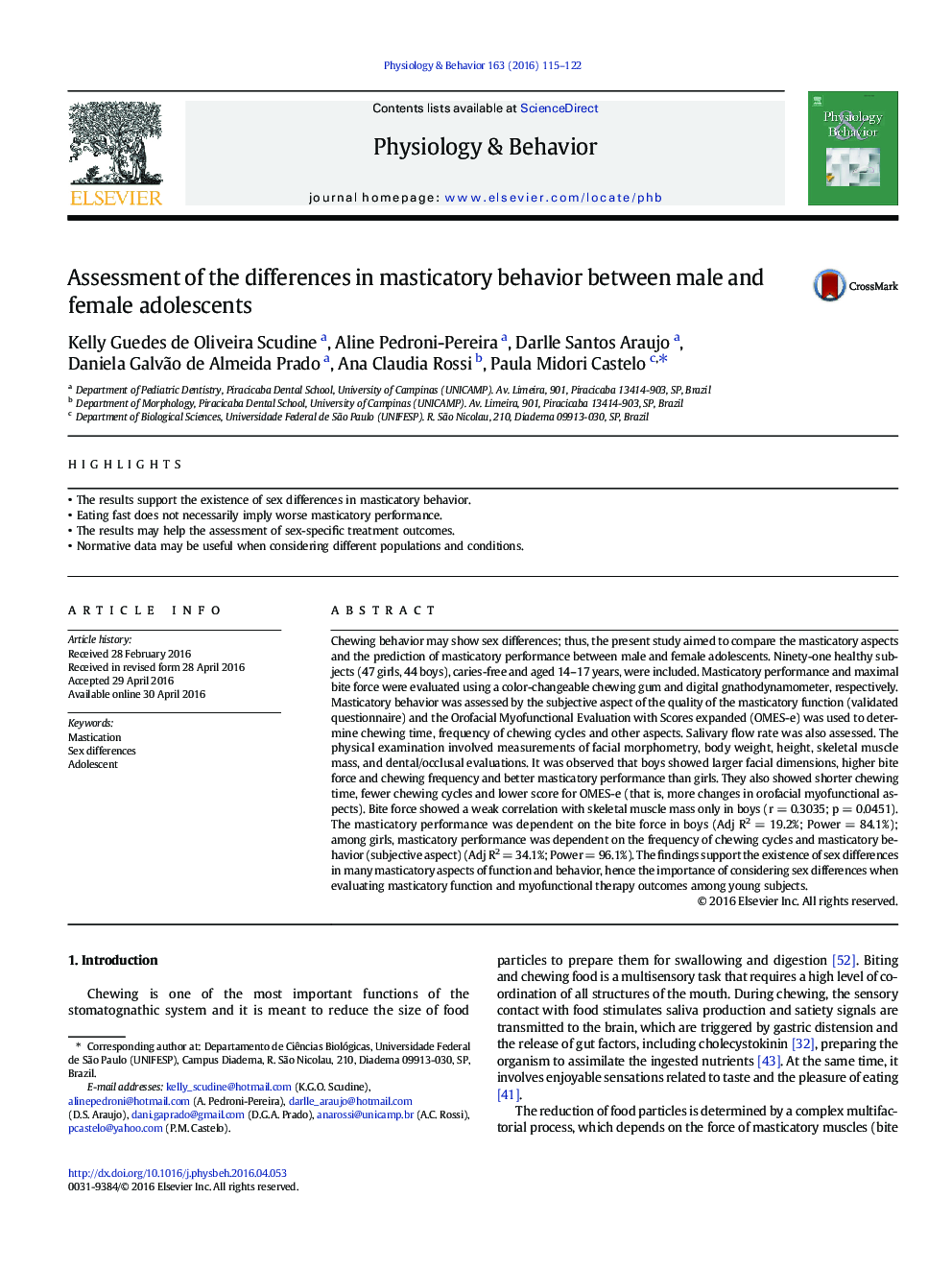| کد مقاله | کد نشریه | سال انتشار | مقاله انگلیسی | نسخه تمام متن |
|---|---|---|---|---|
| 5922897 | 1571155 | 2016 | 8 صفحه PDF | دانلود رایگان |
- The results support the existence of sex differences in masticatory behavior.
- Eating fast does not necessarily imply worse masticatory performance.
- The results may help the assessment of sex-specific treatment outcomes.
- Normative data may be useful when considering different populations and conditions.
Chewing behavior may show sex differences; thus, the present study aimed to compare the masticatory aspects and the prediction of masticatory performance between male and female adolescents. Ninety-one healthy subjects (47 girls, 44 boys), caries-free and aged 14-17 years, were included. Masticatory performance and maximal bite force were evaluated using a color-changeable chewing gum and digital gnathodynamometer, respectively. Masticatory behavior was assessed by the subjective aspect of the quality of the masticatory function (validated questionnaire) and the Orofacial Myofunctional Evaluation with Scores expanded (OMES-e) was used to determine chewing time, frequency of chewing cycles and other aspects. Salivary flow rate was also assessed. The physical examination involved measurements of facial morphometry, body weight, height, skeletal muscle mass, and dental/occlusal evaluations. It was observed that boys showed larger facial dimensions, higher bite force and chewing frequency and better masticatory performance than girls. They also showed shorter chewing time, fewer chewing cycles and lower score for OMES-e (that is, more changes in orofacial myofunctional aspects). Bite force showed a weak correlation with skeletal muscle mass only in boys (r = 0.3035; p = 0.0451). The masticatory performance was dependent on the bite force in boys (Adj R2 = 19.2%; Power = 84.1%); among girls, masticatory performance was dependent on the frequency of chewing cycles and masticatory behavior (subjective aspect) (Adj R2 = 34.1%; Power = 96.1%). The findings support the existence of sex differences in many masticatory aspects of function and behavior, hence the importance of considering sex differences when evaluating masticatory function and myofunctional therapy outcomes among young subjects.
Journal: Physiology & Behavior - Volume 163, 1 September 2016, Pages 115-122
